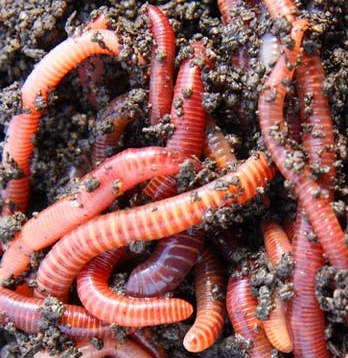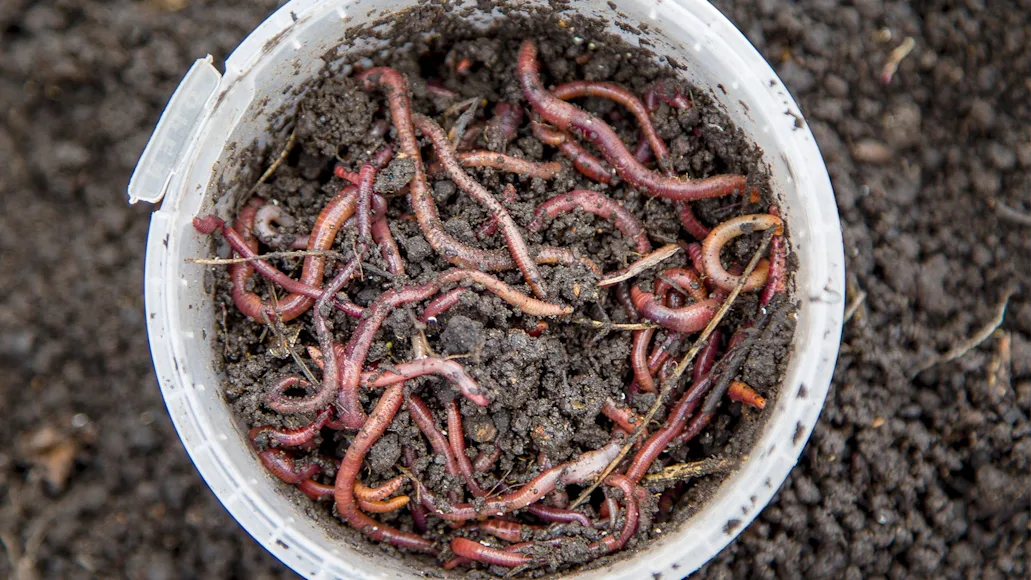All About Where To Find Red Wigglers
All About Where To Find Red Wigglers
Blog Article
What Does Where To Find Red Wigglers Mean?
Table of ContentsA Biased View of Where To Find Red WigglersFascination About Where To Find Red WigglersWhere To Find Red Wigglers - QuestionsThe 20-Second Trick For Where To Find Red WigglersThe Single Strategy To Use For Where To Find Red WigglersSee This Report on Where To Find Red Wigglers
For ideal outcomes, you want to aim for concerning 60-70% moisture level. The simplest examination for this is to squeeze a handful as tough as you can. At the best dampness degrees which is just under 70% that handful must barely produce one decrease of liquid. pH in a worm bin is quite simple to keep.
The Indian Blue is starved, however also likes a warmer environment and it also shows a propensity to escape the bin. The red wiggler is a hardy worm and isn't as picky regarding its environment. I like to call it the Ford Taurus of vermicomposting worms; you won't boast to your hardcore composting buddies that you possess them, however they will certainly offer you well.
As Faucet showed, an angler can do a great bargain to make a worm more enticing.
How Where To Find Red Wigglers can Save You Time, Stress, and Money.
I assume you will as well if you attempt them. The smaller the trout stream, the far better worms work is an axiom that hasn't altered in the 100-plus years because Perry created his short article. Fishermens of his period just stuck their rickety fly rods via alder tangles and went down a heavy worm into a deep hole.
Morning is prime feeding time, and the insubstantial bait's slow descent leaves 5 inches of agonizing protein in complete view for a long time. After you've made the actors, maintain the bond open and placed the pole in a forked stick. The line will certainly diminish the pole in slow loops as the worm settles, however generally the slow-moving loopholes will end up being a blur, and the early morning will all of a sudden get instead interesting.
You can fish deep and cover a great deal of area, and the spider seems to be the perfect touch for this transitional time, when the smallmouths have yet to lock on to a favored forage. Dark jigsblack, brownish, and purpleseem to match the nightcrawler's color. I generally utilize a whole 'spider, prefer marabou dressing, and drop the rod for two or 3 secs when I get a hit.
If it's there, set the hook with a sweep rather than a jerk. As soon as in a while you'll find yourself hooked to those sluggish, hearty pulls, and really feel the weight of a nice walleye.
Our Where To Find Red Wigglers Diaries
When the hefty walleyes go on to the big-water shoals in the late summer season, try pursuing them with a bucktail jig and a 1-inch pinch of nightcrawler. The bait covers the hook point, deflects weeds, and provides a preference of target. With absolutely nothing dangling or flapping, it remains safe no matter of current, casts, or enthusiastic panfish.
Whether you're wading or fishing from a boat, drifting worms is just one of the wonderful browsing strategies for bigger rivers. For trout, a spade-dug, 4-inch yard worm is the appropriate dimension; for bass, walleyes, and steelhead, a nightcrawler might be a far better option. The trick is to wander the bait with feeding and holding areas due to the fact that fish in current are not mosting likely to chase down the lure, as they might in still water.
Strikes will come hop over to these guys as a sharp tug as opposed to a pull or rap. Fish the shifts: mouths of tributaries, bank-side slicks, and the sides of huge pools. As the late Ed Zern, Area & Stream's wonderful satirist, once put it: Fishermens are born sincere however they overcome it. His rule official website puts on any type of variety of angling maneuvers, including the issue of including a piece of worm to a wet fly.

The Buzz on Where To Find Red Wigglers
Include a couple of hundred worms and feed them 2 times a week. Keep the bed linen wet however not wet. On the food selection: lettuce, fruit and veggie waste, and the periodic nongreasy leftover.
Similar to veggie scraps, you can take your utilized coffee grounds and add them to a worm box. Worms love consuming coffee premises. With the best problems and moist, healthy soil, worms can live in a pail of dirt for around three weeks. Shop out of direct sunlight and keep at a temperature in between 50 and 80 degrees.
When the hefty walleyes carry on to the big-water shoals in the late summer season, try pursuing them with a bucktail jig and a 1-inch pinch of nightcrawler. The lure covers the hook point, disperses weeds, and offers a preference of target. With nothing dangling or flapping, it continues to be protected despite present, casts, or ambitious panfish.
The Basic Principles Of Where To Find Red Wigglers
Whether you're wading or angling from a boat, drifting worms is one of the fantastic looking strategies for bigger rivers. Where To Find Red Wigglers. For trout, a spade-dug, 4-inch garden worm is the best size; for bass, walleyes, and steelhead, a nightcrawler may be a better selection. The secret is to drift the bait through feeding and holding locations due to the fact that fish in current are not going to ferret out the bait, as they may in still this water
Strikes will certainly come as a sharp tug instead than a pull or rap. Fish the changes: mouths of tributaries, bank-side slicks, and the sides of big swimming pools. As the late Ed Zern, Field & Stream's wonderful satirist, once put it: Anglers are birthed sincere yet they overcome it. His motto puts on any kind of variety of angling maneuvers, consisting of the matter of adding a piece of worm to a damp fly.
Elevating your own lure means you can slide out of the residence and struck the fish pond prior to Mama comes homejust like in the old days. Right here's how to keep a worm box: Cut a sheet of CDX-grade plywood, which is made with waterproof adhesives, to your measurements. Accomplish together and pierce a loads 12-inch openings in the base for water drainage.
Getting My Where To Find Red Wigglers To Work
Include a couple of hundred worms and feed them two times a week. Keep the bedding wet but not wet. On the menu: lettuce, fruit and vegetable waste, and the occasional nongreasy extra (Where To Find Red Wigglers).
Simply like veggie scraps, you can take your made use of coffee premises and add them to a worm box. Worms love consuming coffee grounds.
Report this page